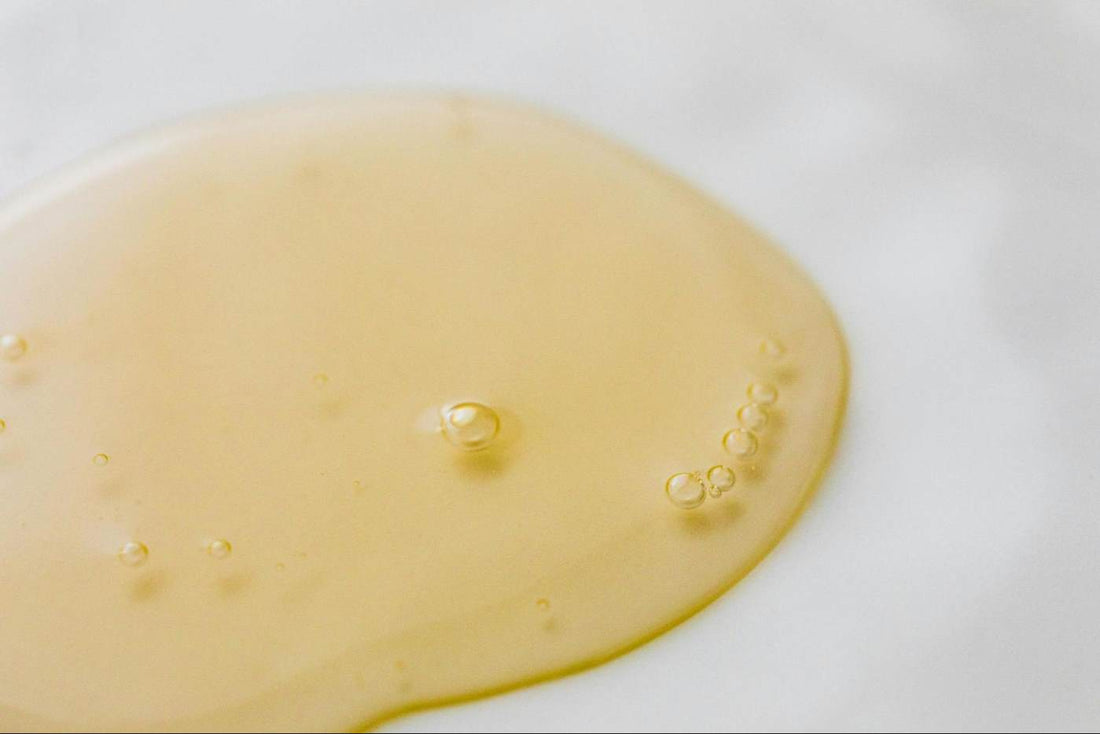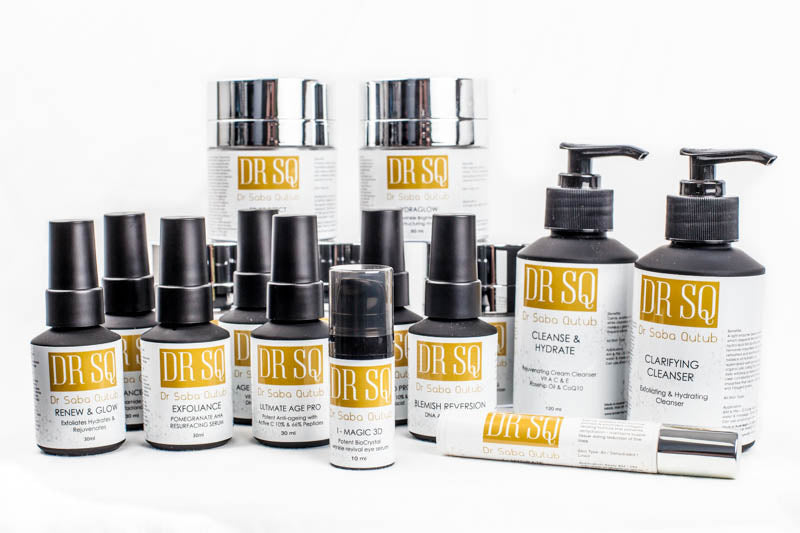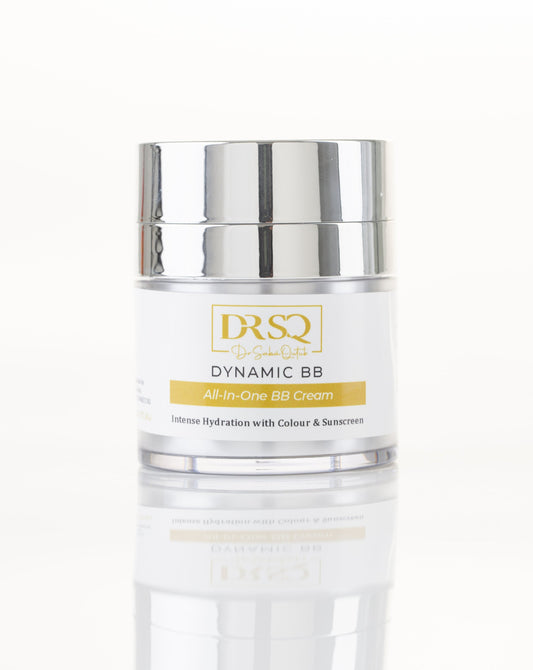AHA Vs BHA: Know the Difference

Are you worried about your skin getting bumpy, dry, clogged, and uneven? Have you tried exfoliants? Learn about them before you include them in your daily skincare routine.
AHA and BHA are different acids and applying them on your skin can make a substantial difference. Chemical exfoliants significantly remove the buildup of dead skin and enhance a healthier complexion. In this blog, we will address the difference between chemical exfoliants AHA (Alpha-hydroxy acid) and BHA (Beta-hydroxy acid), the benefits of combining them, how you can use them, and which suits your skin type.
What are AHAs?
Alpha-hydroxy acid or AHA is a fruit acid. It is extracted from sugarcane or other plant sources. AHA is a broad term and comprises multiple acids in its ambit, such as glycolic, lactic, citric, and malic acid. AHAs are best suited for dry to normal skin as they amplify the moisture content in the skin.
It is a water-soluble acid and encourages cell turnover. It being a water-soluble acid doesn’t reach the skin’s natural oil and works on its surface. Unlike other acids, it doesn’t initiate its work through inflammation, nor is it abrasive like most face scrubs.
AHA is added to skin care products to gently exfoliate skin and loosen up the outermost layer of old dead skin cells with gluey substances that hold the skin together. Apart from its obvious skincare benefits, AHA is highly recommended in the treatment of xerosis, melasma, and ichthyosis. It primarily enhances skin firmness, prevents breakouts and sun damage, and boosts hydration.
Also, another quirky tidbit for you, AHAs help treat dark spots. However, to achieve this you need to use AHA in higher concentration and combine it with vitamin C.
Types of AHAs
AHAs are of different types. Here we are providing a detail for you to choose from.
-
Glycolic acid: Enhancing the skin’s ability to retain hydration and prevent fine lines, it is one of the most known and widely used skincare ingredients. Glycolic acid naturally occurs in sugarcane and is the diminutive water-soluble AHA. it penetrates deep into the skin and reduces the buildup of melanin.
-
Citric acid: Citric acid is found in citric fruits and is known to be a pH adjuster. It is an exfoliant and antioxidant. This AHA unclogs the pores, even the skin tone, and smoothens and brightens the skin.
-
Lactic acid: Lactic acid is found primarily in dairy and fermented vegetables and increases skin cell turnover to appropriate post-acne hyperpigmentation. Lactic acid plays a significant role in diminishing apparent pores too.
-
Malic acid: Malic acid is chiefly found in apples that clean and hydrate the skin.
-
Mandelic acid: This type of AHA is made from almond extracts and improves skin texture and shrinks pore size.
- Tartaric acid: Tartaric acid is made from grape extracts and helps fight the damage from sun and acne. It is a great exfoliant as well and makes room for other products to penetrate the skin and do their job. Tartaric acid is an antioxidant too that improves skin’s texture.
Benefits of AHA
-
Encourage collagen production: AHA encourages collagen production and reduces the appearance of fine lines. It is known to enhance collagen synthesis through fibroblasts and decrease degradation of the active dermal matrix, and has proved itself efficient in reducing wrinkles and sun damage too.
-
Reduce melasma and sun damage: Incorporating AHA in your skincare routine regularly as a chemical peel has been known to reduce hyperpigmentation and sun damage.

-
Scale down acne: AHA works as an exfoliant and loosens the bond of the dead skin cells. With this, the dead skin cells that are blocking pores and causing acne may also shed. It works on the inside of the skin as well as the outer by targeting all areas.
- Boost skin texture: AHA gently exfoliates the skin and removes the dead skin cells that are causing dryness and irritation. As a result, the skin texture improves leaving with plump and soft skin.
What are BHAs?
Beta-hydroxy acid or BHA is an organic carboxylic acid. It is different from AHA in terms of its positioning in one hydroxyl group. It is a type of mild acid found in fruits, dairy products, plants, and tree bark.
The ever-popular salicylic acid and dependents are types of BHA. As opposed to the former acid, BHA is an oil-soluble acid. It penetrates past the skin cells and pushes past the sebum and sebaceous filaments to remove the excess dirt and dead skin cells.
BHA works by dissolving the bond that holds the dead skin together. It is most preferred for balanced and oily skin types. Also, it proves itself beneficial for large skin pores, bumps, blemishes, and clogs.
BHAs are known for removing dead skin cells and promoting the growth of new skin cells. Besides its use in skincare products, BHA can be applied to the hair as well, as it removes excess oil that the sebaceous glands produce through sebum.
Furthermore, it is widely recognised for its anti-inflammatory properties. It also stimulates collagen production and improves the elasticity in the skin making it more plump. It is primarily used to even the skin tone, calm the skin, and unclog the pores.
Types of BHAs
Only one BHA is predominantly used in most skincare products.
-
Salicylic acid: The most popular BHA available, salicylic acid performs marvel to trim down acne. It sheds off the dead skin cells from the top skin layer and is excellent for oily and rosacea-prone skin. It is also used to treat blackheads and whiteheads. For excessively oily skin, it minimises the overproduction of oil as well.

Benefits of BHA
-
Anti-inflammatory: Salicylic acid, one of the most popular BHAs is known to have anti-inflammatory properties. It reduces redness and irritation and is most suitable for acne-prone, rosacea-prone, and sensitive skin.
-
Anti-ageing: Salicylic acid promotes collagen production and skin cell turnover which reduces wrinkles and fine lines.
-
Removes Blackheads: BHA penetrates the skin barrier and dissolves the bonds of the skin cells and in the process removes the blackheads and whiteheads. Scrubbing is a temporary solution for these but using salicylic acid as an exfoliate comes useful in the long run.
- Keratolytic agent: Keratin is a protein that causes skin cells to clump together but BHA is a keratolytic agent that breaks down keratin leaving with smooth and soft skin. BHA is oil-soluble which works by penetrating deep and resolving the issues from the base.
Difference between AHA and BHA
We have explored some of the differences above but now we want to indulge in detail so, you know every nook and cranny. Here is a guide for you and in this way you will know where to invest and what is best for your skin.
|
Difference |
AHA |
BHA |
|
Solubility |
It is a water-soluble acid. |
It is an oil-soluble acid. |
|
Works on |
It works by breaking the bond between dead skin cells. |
It works by dissolving the bond that holds the dead skin cells together. |
|
Type |
Glycolic, lactic, tartaric, citric, malic, and mandelic acid. |
Salicylic acid. |
|
Reach |
It works on the skin’s surface. |
It reaches past the surface of the skin. |
|
Extracted from |
Sugarcane |
Fruits, dairy products, plants, tree bark. |
|
Best-suited for |
Dry to normal skin |
Balanced and oily skin. |
|
Beneficial for |
Collagen production, reduction of melasma, acne, and sun damage. |
Anti-aging, anti-inflammatory, and reduces blackheads. |
Can we use both of them together?
AHAs and BHAs work wonders singularly but what if we combine them and can we combine them? Yeah, why not? We can use both products together and their benefits are known to augment as well. Using them simultaneously increases collagen production and makes the dermis and epidermis noticeably plumper.
The easiest way is to look for a product that has both acids in balanced percentages. Moisturisers with balanced formulas are most suitable. Avoid products with high concentrations of both as it may cause irritation and inflammation.

AHAs and BHAs both are exfoliants so there is no need to pile them one above another instead using them alternatively yields great results and we can avoid dryness and irritation as well. Another way to use them together is to use AHA where you have dryness and BHA where you have oily skin.
Skincare routine
AHA and BHA are powerful ingredients and incorporating them into your skincare routine can transform your skin into a youthful and glass skin. Here is a complete guide before you dive into the world of acids as a beginner. In this step-by-step skincare routine, you can choose the right acid of your choice.
-
Cleanser: Start your day with a hydrating cleanser. A good cleanser not only deeply cleanses the skin but also clears it off the dead skin cells. Investing in a cleanser that doesn’t strip off the natural oils from the face is essential. DRSQ Clarifying cleanser with 2.5% AHA is excellent for oily, acne, and breakout-prone skin. It has all the significant acids along with Vitamin B5 and Aloe vera that revitalise the cells and has anti-inflammatory properties. Its active exfoliating agent goes beyond the surface and removes debris and toxins.
-
AHA or BHA exfoliant: After thoroughly cleansing the face with a cleanser, apply a leave-in exfoliating serum avoiding the eye area. It is best to have an exfoliant with a combination of both acids for better and more efficient results.
DRSQ Renew and Glow leave-in exfoliating serum gently exfoliates and calms the skin with the presence of hyaluronic acid and makes the skin more smooth and luminous. The combination of Lactic, glycolic, and salicylic acid along with Niacinamide clears the blocked pores and expedites cellular renewal.
-
Moisturiser: Locking in a moisturiser is one of the foremost steps. Choose a moisturiser suitable for your skin. DRSQ Hydracalm moisturiser with hyaluronic acid, jojoba, and cucumber seed oil calms the skin and makes it plump detoxifying the skin and reducing inflammation.
- Sunscreen: Protecting your skin from harmful UV rays is crucial. Applying a generous layer of sunscreen while you are using AHA or BHA makes a lot of difference. Pick a broad-spectrum sunscreen with SPF 30 or higher.
Some tips for beginners, be patient while using AHA and BHA. The results are not visible from the immediate start and remember consistency is the key.
Combine benefits of AHA and BHA
We have shared with you what is AHA and BHA, their details, and benefits but have not told you about the combined benefits of both. So, here is it.
- Exfoliation: AHA and BHA are excellent exfoliants. They remove the top layer of the skin and reveal fresh and smooth skin. Exfoliation comes with a lot of benefits including reduced hyperpigmentation and wrinkles.
- Unblock pores: Another merit of these is the unblocking of pores which leaves the skin with the removal of blackheads and whiteheads. Excess oil is separated to prevent the impurities from entering the skin.
-
Smoothens and brightens the skin: Using the exfoliants smoothens, brightens, and improves the skin texture. It secludes the rough and uneven patches from the skin. Also, it is known to treat discolouration and dark spots.

Side effects of AHA and BHA
AHA and BHA generally do not harm the skin when used properly but using a high-potency acid from the beginning may cause irritation, redness, dryness and sensitivity instead increase the potency gradually or consult your dermatologist. Another, side effect that can be avoided is using AHA or BHA with other scrubs or exfoliants as it may trigger irritation.
Take away
AHA and BHA are potent ingredients used extensively to treat diverse skin issues. From a little obstacle such as dryness, uneven skin tone, or dull skin to dealing with hyperpigmentation, all these can be shooed away by the use of these acids. They come with negligible side effects and have multifarious advantages. Incorporate them into your skincare routine and see the results yourself.



